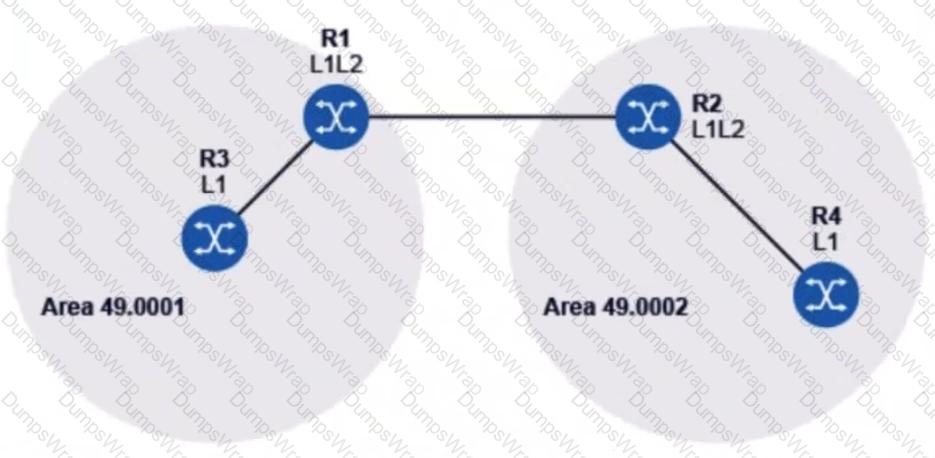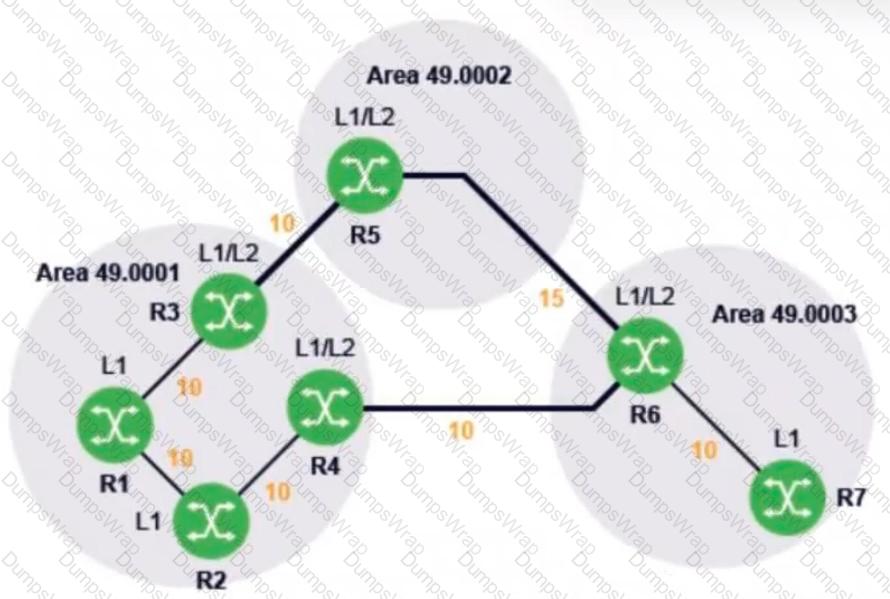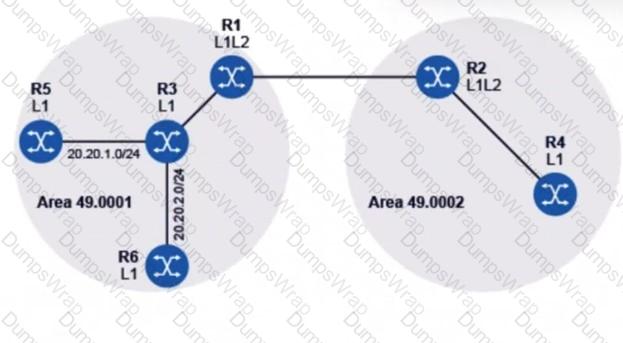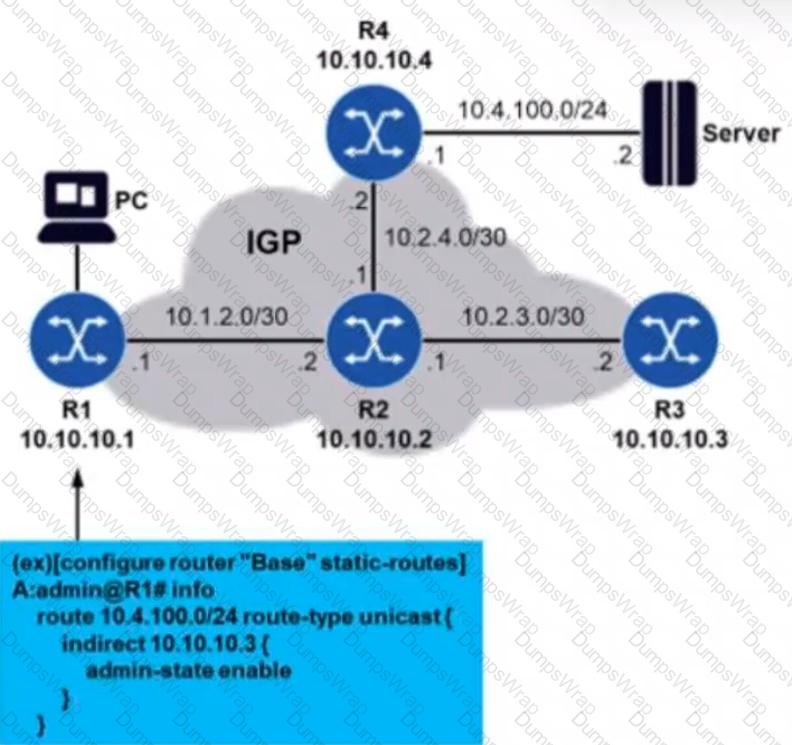Nokia IS-IS Routing Protocol Questions and Answers
Which of the following statements regarding the databases used by a link-state routing protocol in a single-are routing domain is FALSE?

Routers R1 through R4 in the diagram have established IS-IS adjacencies. Router R1 is L1/L2 and is the DIS of its two broadcast interfaces. How many LSPs will it generate?
A routing domain uses a link-state routing protocol. Which of the following would NOT be an advantage of dividing the entire routing domain into areas?
What is the replacement for ARP in IPv6?
For a link-state routing protocol, which of the following statements about link-state updates is FALSE?

In the diagram, all routers are using IS-IS as their routing protocol. The number next to each link is its metric value.
What path will traffic follow from router R1 to router R7, and from router R7 to router R1?

In the IS-IS network shown, router R1 has been configured to summarize subnetworks 20.20.1.0/24 and 20.20.2.0/24 as 20.20.0.0/16. Which routers’ routing tables will be reduced, compared to their routing tables before the summarization?

Which of the following statements best describes the IS-IS domain to which the command output corresponds?
Which of the following statements about router interfaces on a Nokia 7750 SR is FALSE?

Routers R1, R2, R3, and R4 are running IS-IS. Assuming all interfaces are added to IS-IS as point-to-point and no commands are issued at the interface level to restrict adjacencies, which of the following statements is TRUE?
Which of the following statements about IS-IS is FALSE?

Routers R1 through R4 are running an IGP in such a way that they have each other’s system IP addresses in their routing tables. A static route is configured on router R1 so that it can reach subnetwork 10.4.100.0/24. The network administrator decides to use an indirect static route, as shown in the diagram. However, pinging the server from router R1 fails. What may be the problem in this case?

 RoutersR1andR2have a usage ofL2, meaning they are L2 routers.
RoutersR1andR2have a usage ofL2, meaning they are L2 routers. RoutersR3andR4have a usage ofL1, meaning they are L1 routers.
RoutersR3andR4have a usage ofL1, meaning they are L1 routers. L1 routersonly communicate within their own area.
L1 routersonly communicate within their own area. L2 routerscommunicate between areas.
L2 routerscommunicate between areas.